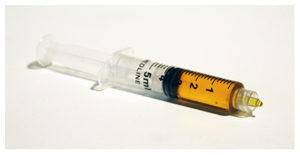Labeling laws and truthful claims are not just critical for protecting the consumer, and they also ensure a level playing field for participants. Even during times of stalled regulatory clarity and enforcement, there is still the ‘golden rule’: do unto others by ensuring product labels are truthful and not misleading.
As we know in this era of alternative facts, it’s easy to make a claim, but harder to verify it with facts and science. (Go science.) But science has a problem. Even when fully developed, it rarely provides the full 100% confidence that may be required to change beliefs and opinions. (Boo, science.)
First example: identity claims. Many are aware that the identity of dietary ingredients need to be stated on the product label, and the specification. What is often missed is that verification through analytical tests to confirm identity are required on every batch of dietary ingredients – a minimum requirement under GMP.
Unfortunately, many identity methods miss the mark for validity and fitness for purpose – also a minimum requirement under GMP which tends to be overlooked. But if an ID method does not detect the presence or absence of common adulterants for a particular material, then how is it meeting the minimum requirement? How is it considered suitable for its purpose? In most cases, more work is needed: an adulterants review, developing and adopting multiple methods that determine a material’s identity, and adequate supplier qualification are all keys to providing a more reliable assurance of identity. The ‘totality’ approach to assuring identity is especially helpful when non-specific or indirect measures are used, like those based on infrared spectroscopy or thin layer chromatography.
Health claims also require scientific evidence. (Go science.) Here the standards are more clear, but not without some confusion. It is pretty clear that the U.S. scientific establishment plus judge and jury has decided that animal data, anecdotes and traditional use are not scientific, and therefore are not sufficient evidence to support a health claim. Past that, there’s some gaps in minimum requirements, and ask ten experts to get ten opinions (One or two studies? Published or not?). But most agree that well-designed human studies, with differences in treatment versus control groups different to more than a 95% confidence limit (known as p<0.05) are the path to health claims substantiation. This arbitrary statistical cutoff can be criticized, too, because when p=0.051 (a confidence of 94.9%), a product is deemed no more effective than placebo. The difference is the line between effective supplement and worthless snake oil. This confuses even most scientists, but it does set a pass/fail that can be evenly applied.
Science is becoming increasingly useful in the verification of content claims. Now that analytical tools can quantify at picomolar concentrations, almost down to the molecule, content claims can be powerful and truthful if investments are made in developing and verifying them. On the other hand, content claims are increasingly policed by consumer groups and class action attorneys, so a failure to verify content claims can be painful. In one recent example, the kombucha tea industry has been hit hard by a series of settlements involving mislabeling of alcohol, sugar and antioxidant content, and exploding bottles. Debate over which test methods were suitable for ethanol (one of the most frequently analyzed substances) led to an industry-wide effort to validate a method specific for kombucha. The validation in kombucha compositions was the last step required in order to rule out the slim possibility that kombucha contained unique matrix interferences that could make it difficult to measure with reliability. As a participant in the project, validation results from our partner laboratories showed a GC-FID method commonly used for ethanol in foods and beverages was indeed fit for purpose. After approval by the AOAC scientific expert review panel, the method is now becoming adopted by the kombucha industry as a standard method.
While not all methods require this kind of validation, the process is the key part to pay attention to. First you need to verify the test method. Then you verify the product against the claim you want to use, with the verified test method. Then you can put the claim on your label. In that order.
Here’s another catch about claims: your evidence is only so good as it verifies the claim. Picture an ingredient made on the same manufacturing line as a common allergen. Is a test report and supplier checklist from last year sufficient on its own to prove that a new shipment you just received is allergen-free? Maybe, maybe not. The best test method in the world will not make up for a lack in understanding whether you should reasonably expect the same results with the new lot as you did before. Verification is not just about testing.
Regardless, for those who are interested in verifying label claims, hopefully we can all agree that there should be rules, and the same rules should apply to everyone. What should also be agreed is that whether claims are truthful and misleading should be based on science and facts, not beliefs and opinions. Go, science!
By: Blake Ebersole
Published in Natural Products Insider, 2017
